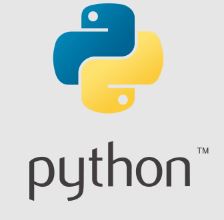In PySpark, spark.table() is used to read a table from the Spark catalog, whereas spark.read.table()…
Tag: PySpark
PySpark : Extracting dayofmonth, dayofweek, and dayofyear in PySpark
pyspark.sql.functions.dayofmonth pyspark.sql.functions.dayofweek pyspark.sql.functions.dayofyear One of the most common data manipulations in PySpark is working with date and time columns. PySpark…
Explain the purpose of the AWS Glue data catalog.
The AWS Glue data catalog is a central repository for storing metadata about data sources, transformations, and targets used in…
Spark : Calculate the number of unique elements in a column using PySpark
pyspark.sql.functions.countDistinct In PySpark, the countDistinct function is used to calculate the number of unique elements in a column. This is…
Spark : Advantages of Google’s Serverless Spark
Google’s Serverless Spark has several advantages compared to traditional Spark clusters: Cost-effective: Serverless Spark eliminates the need for dedicated servers…
PySpark : How to decode in PySpark ?
pyspark.sql.functions.decode The pyspark.sql.functions.decode Function in PySpark PySpark is a popular library for processing big data using Apache Spark. One of…
PySpark : Date Formatting : Converts a date, timestamp, or string to a string value with specified format in PySpark
pyspark.sql.functions.date_format In PySpark, dates and timestamps are stored as timestamp type. However, while working with timestamps in PySpark, sometimes it…
PySpark : Adding a specified number of days to a date column in PySpark
pyspark.sql.functions.date_add The date_add function in PySpark is used to add a specified number of days to a date column. It’s…
PySpark : How to Compute the cumulative distribution of a column in a DataFrame
pyspark.sql.functions.cume_dist The cumulative distribution is a method used in probability and statistics to determine the distribution of a random variable,…
PySpark : How to convert a sequence of key-value pairs into a dictionary in PySpark
pyspark.sql.functions.create_map create_map is a function in PySpark that is used to convert a sequence of key-value pairs into a dictionary….
PySpark : Truncate date and timestamp in PySpark [date_trunc and trunc]
pyspark.sql.functions.date_trunc(format, timestamp) Truncation function offered by Spark Dateframe SQL functions is date_trunc(), which returns Date in the format “yyyy-MM-dd HH:mm:ss.SSSS”…










